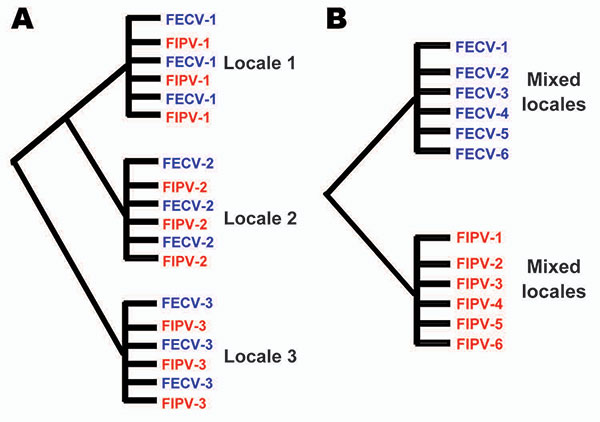Volume 15, Number 9—September 2009
Research
Genetics and Pathogenesis of Feline Infectious Peritonitis Virus
Figure 1

Figure 1. Alternative phylogenetic predictions of the in vivo mutation hypothesis versus the dual circulating virulent/avirulent hypothesis. A) The in vivo mutation transition hypothesis predicts paraphyly of feline infectious peritonitis (FIP) cases and feline enteric coronavirus (FECV) asymptomatic feline coronavirus (FCoV) isolates). B) The circulating virulent/avirulent strain hypothesis predicts reciprocal monophyly of FIV-cases versus FECV asymptomatic. Numbers represent individual cat (or locale), which is either FIPV case (red) or FECV asymptomatic (blue). Evidence presented in this article supports the circulating dual virulent and avirulent strains.
Page created: December 07, 2010
Page updated: December 07, 2010
Page reviewed: December 07, 2010
The conclusions, findings, and opinions expressed by authors contributing to this journal do not necessarily reflect the official position of the U.S. Department of Health and Human Services, the Public Health Service, the Centers for Disease Control and Prevention, or the authors' affiliated institutions. Use of trade names is for identification only and does not imply endorsement by any of the groups named above.